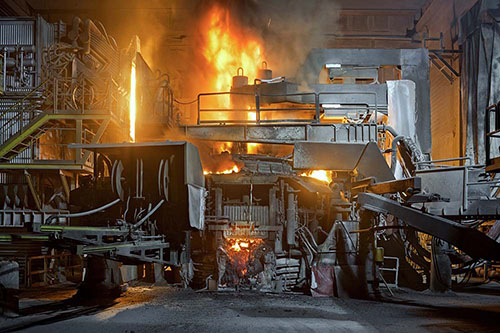Arc Furnace Graphite Electrode Manufacturer
Graphite electrodes are integral components in the functioning of arc furnaces, playing a vital role in numerous industrial processes. This article provides an insightful and comprehensive overview of graphite electrodes, focusing on their composition, manufacturing process, applications, and significance in industrial settings.

1. Introduction to Graphite Electrodes:
Graphite electrodes are electric conductors used to supply the electric current needed for melting and processing raw materials in arc furnaces. Their high electrical conductivity, thermal resistance, and mechanical strength make graphite an ideal material for this purpose.
The primary constituents of graphite electrodes are petroleum coke and pitch coke, with a small proportion of coal tar pitch as a binding agent. The production involves a series of steps, including calcination, blending, forming, baking, and graphitization, to achieve the desired properties.
3. Manufacturing Process:
a. Calcination: Raw materials are heated in rotary or shaft kilns to eliminate volatile compounds and moisture.
b. Blending: The calcined petroleum coke and pitch coke are combined to achieve the required properties.
c. Forming: The blended mixture is shaped into electrode forms.
d. Baking: The green electrodes are heated in an electrically powered furnace at high temperatures to achieve specific electrical conductivity and mechanical strength.
e. Graphitization: Baked electrodes are exposed to ultra-high temperatures (over 2500°C) to enhance electrical conductivity.
a. Regular Power (RP) Electrodes: Suited for standard furnace applications.
b. High Power (HP) Electrodes: Ideal for high-power furnaces necessitating higher current densities.
c. Ultra High Power (UHP) Electrodes: Designed for ultra-high-power electric arc furnaces.
5. Application in Arc Furnaces:
Graphite electrodes serve as conductive rods that transmit electrical energy from the power source to thearc furnace. This electricity generates intense heat, causing the charged materials in the furnace to melt and undergo necessary chemical reactions.
6. Key Properties:
a. Electrical Conductivity: Enables efficient transmission of electricity to the furnace.
b. Thermal Conductivity: Facilitates even distribution of heat within the furnace.
c. Mechanical Strength: Essential for maintaining structural integrity during the rigorous furnace conditions.
d. Resistance to Thermal Shock: Crucial to endure rapid temperature variations in the furnace.
7. Environmental Impact:
The production of graphite electrodes can have environmental implications due to the energy-intensive graphitization process. However, advancements in energy-efficient technologies are continually reducing the associated carbon footprint.
Understanding graphite electrodes and their role in arc furnaces is paramount for achieving efficiency in various industrial applications. As technology progresses, manufacturing processes will evolve to ensure better performance and reduced environmental impact, contributing to sustainable industrial practices.





